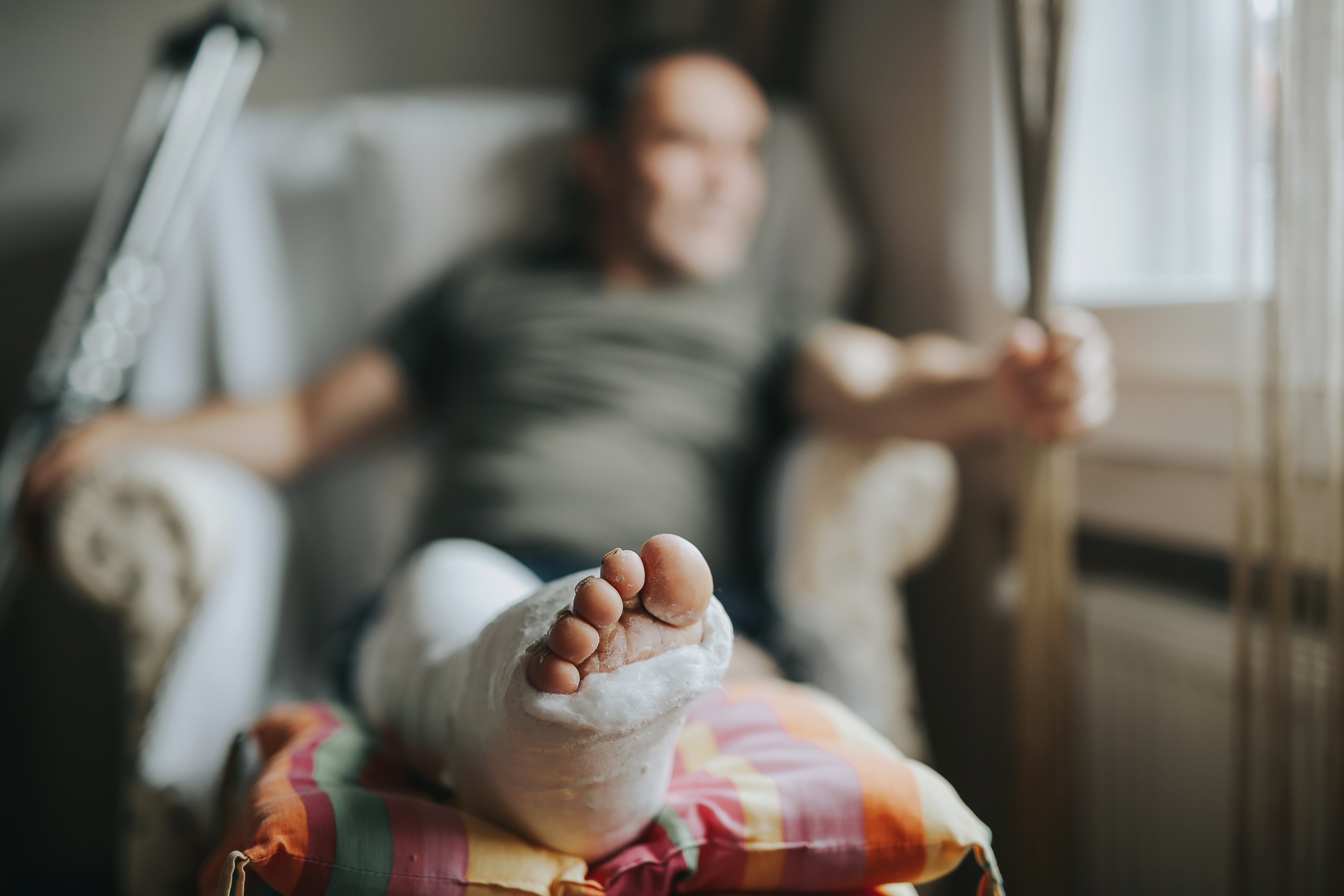Bodily Injury vs. Property Damage
Personal injury cases in New York involve harm inflicted upon an individual, their body, or property. Understanding the distinction between bodily injury and property damage is vital, as it impacts the legal processes, compensations, and liabilities associated with each.

Bodily Injury
New York's Legal Definition of Bodily Injury
In the context of New York personal injury law, bodily injury is legally defined as harm to an individual's physical well-being or health. This encompasses a broad range of injuries, from minor bruises to severe trauma, sustained as a result of another party's negligence, intentional actions, or strict liability. The legal framework recognizes the significance of protecting individuals from physical harm, and New York statutes provide a comprehensive definition to guide the assessment of bodily injury claims.
Types of Harm Considered Bodily Injury in New York
The scope of bodily injury encompasses various types of harm inflicted upon an individual. This includes, but is not limited to:
- Cuts and Bruises: Superficial injuries that may result from accidents or altercations.
- Fractures and Sprains: Injuries affecting bones and joints, often occurring in accidents.
- Life-threatening Injuries: Traumatic brain injury, spinal cord injury, third degree burns and other catastrophic injuries.
- Internal Injuries: Harm to internal organs, such as contusions or organ damage.
- Emotional Distress: In some cases, emotional harm may be considered part of bodily injury.
Long-Term Consequences and Disabilities Resulting from Bodily Injury
Bodily injuries can have lasting consequences, leading to disabilities or impairments that affect an individual's daily life. Long-term consequences may include:
- Chronic Pain: Injuries causing persistent pain and discomfort.
- Disabilities: Loss of limb function, mobility, or sensory capabilities.
- Psychological Impact: Emotional trauma resulting in conditions like PTSD.
- Medical Complications: Secondary health issues arising from the initial injury.
Understanding the full scope of bodily injury is crucial for assessing the extent of damages in personal injury cases, ensuring that victims are appropriately compensated for the harm they have suffered.
Overview of Statutes Governing Bodily Injury Claims
Bodily injury claims in New York are governed by a set of statutes that establish the legal framework for seeking compensation. The key statutes include:
- New York Civil Practice Law and Rules (CPLR): This is a comprehensive set of rules that outlines the procedures and requirements for civil litigation, including personal injury claims.
- New York General Obligations Law: This law addresses the general obligations and duties of individuals, including those related to preventing harm to others.
Statute of Limitations for Filing Bodily Injury Lawsuits
You should be aware of the statute of limitations when filing bodily injury lawsuits in New York. The statute of limitations sets a deadline for initiating legal action after the occurrence of the injury. In New York, the statute of limitations for personal injury cases, including bodily injury claims, is generally three years from the date of the incident. Pertaining to this, certain circumstances may alter this timeline, emphasizing the importance of promptly seeking legal advice to ensure compliance with deadlines.
Comparative Negligence in Bodily Injury Cases
New York follows the principle of comparative negligence in personal injury cases, including those involving bodily injury. Comparative negligence allows for the allocation of fault among the parties involved in an incident. If the injured party is found to share some degree of responsibility for the injury, the compensation awarded may be reduced proportionally. New York's pure comparative negligence system ensures that even if an injured party is partially at fault, they can still recover damages, although the amount may be adjusted based on their percentage of fault.
Compensation for Bodily Injury in New York
When pursuing a bodily injury claim in New York, understanding the types of compensation available is crucial. Compensation typically falls into two main categories: economic and non-economic damages.
Economic Damages:
- Medical Expenses: In the aftermath of a bodily injury, victims often incur substantial medical costs, including hospital bills, surgeries, medications, rehabilitation, and other necessary treatments. Economic damages can cover these expenses to ensure that the injured party receives proper medical care and recovery support.
- Lost Wages: If the injury results in an inability to work, economic damages may include compensation for lost wages. This encompasses income lost during the recovery period, as well as any potential future earnings that are affected by the injury.
Non-economic Damages:
- Pain and Suffering: Beyond tangible financial losses, individuals who experience bodily injuries may endure physical pain and emotional suffering. Non-economic damages aim to provide compensation for these intangible harms, acknowledging the mental and emotional toll of the injury.
- Emotional Distress: In certain cases, bodily injuries lead to emotional distress, such as anxiety, depression, or post-traumatic stress disorder (PTSD). Non-economic damages can address these psychological consequences, recognizing the impact on the individual's overall well-being.
Notably, New York places no statutory caps on the amount of compensation an individual can receive for economic or non-economic damages in personal injury cases. However, the specific circumstances of each case, the severity of the injury, and its impact on the victim's life will influence the final compensation awarded. Consulting with an experienced personal injury attorney is essential to accurately assess and pursue the full spectrum of damages available in a bodily injury claim.
Property Damage
Legal Definition of Property Damage in New York
Within the ambit of personal injury law in New York, property damage refers to the harm inflicted on an individual's belongings, encompassing both personal and real property. Personal property includes items such as vehicles, clothing, electronics, and other possessions, while real property pertains to buildings, land, and any permanent fixtures. The definition of property damage extends to various types of harm that may affect these belongings, including physical destruction, loss of use, or diminished value.
Types of Harm Considered Property Damage in New York
Physical Destruction: When an individual's belongings suffer tangible harm, such as a car being damaged in a collision or personal items being destroyed in an accident, it constitutes property damage. This damage can range from minor scratches to total destruction, depending on the nature of the incident.
Loss of Use: Property damage also includes instances where the owner loses the use of their belongings due to the incident. For example, if a car is rendered undrivable or a residence becomes uninhabitable, the loss of use is considered a form of property damage.
Diminished Value: Even if repaired, certain damages can result in a diminished value of the property. For instance, a car that has been in a significant accident may have a lower market value even after repairs. In such cases, the diminished value is considered a component of property damage.
Statutes Governing Property Damage Claims
Property damage claims in New York fall under the broader category of personal injury law, and several statutes govern these claims to ensure a fair and just resolution for the parties involved. Key legal principles and precedents guide the assessment and compensation for property damage, helping establish liability and quantify the losses suffered by the affected party.
Statute of Limitations for Filing Property Damage Lawsuits
In New York, individuals seeking to file property damage lawsuits must adhere to the statute of limitations, which imposes a time limit within which legal action must be initiated. The statute of limitations for property damage claims varies depending on the nature of the incident and the type of property affected.
Evaluation of Property Damage Claims
The evaluation of property damage claims involves a comprehensive assessment of the extent of harm suffered by the affected party. This evaluation considers factors such as the nature and severity of the damage, the cost of repairs or replacement, and any associated economic losses, including loss of use or diminished value. Gathering evidence, such as photographs, repair estimates, and documentation of the property's pre-incident condition, is crucial in supporting and substantiating the property damage claim.
Engaging in open communication with insurance providers and legal professionals is essential during the evaluation process. Experienced attorneys specializing in personal injury law, such as Michael S. Lamonsoff "The Bull," can provide valuable insights and guidance, ensuring that property damage claims are meticulously assessed and appropriately compensated.
Compensation for Property Damage in New York
When property is damaged due to the actions or negligence of another party, the injured party may seek compensation for various losses associated with the harm caused. Here are key considerations related to compensation for property damage:
Assessing Repair or Replacement Costs for Damaged Property: One significant aspect of compensation for property damage involves the costs associated with repairing or replacing the damaged items. This includes the expenses for materials, labor, and any other relevant costs incurred in restoring the property to its pre-incident condition. Documentation, such as repair estimates, invoices, and receipts, is essential in providing a clear understanding of the financial impact suffered by the property owner.
Diminished Property Value and Related Compensations: In some cases, property damage can result in a diminished value of the affected property even after repairs have been completed. Diminished value refers to the reduction in the property's overall worth or market value due to the documented history of damage. Seeking compensation for diminished property value involves presenting evidence and expert opinions to support the claim. This compensation aims to address the economic loss sustained by the property owner, acknowledging that the property may not command the same value in the market as it did before the incident.
Engaging legal professionals with expertise in property damage claims, such as Michael S. Lamonsoff "The Bull," can be instrumental in navigating the complexities of seeking compensation.
Overlapping Cases: Cases Involving Both Bodily Injury and Property Damage
In certain unfortunate incidents, legal cases may involve both bodily injury and property damage, presenting a complex scenario that requires careful examination. Understanding the dynamics of such cases is crucial for both plaintiffs and legal practitioners. Here are key considerations when bodily injury and property damage coexist:
Scenarios Where Bodily Injury and Property Damage Coexist
These cases often arise in situations such as car accidents, workplace incidents, or premises liability claims where an individual sustains both bodily harm and damage to personal or real property. For instance, a car collision may result in physical injuries to occupants and simultaneous damage to the vehicles involved.
Legal Considerations in Handling Such Cases
Handling cases involving both bodily injury and property damage requires a comprehensive legal approach. Legal professionals need to assess the interconnected nature of the damages, considering how the injuries and property damage influence one another. Coordination between medical professionals, property appraisers, and other experts may be essential to build a comprehensive case.
Calculating Compensation for Both Aspects
Determining compensation in cases involving both bodily injury and property damage involves evaluating the economic and non-economic losses associated with each aspect. This may include medical expenses, lost wages, pain and suffering for bodily injury, and repair or replacement costs, as well as diminished property value for property damage. An experienced attorney, like Michael S. Lamonsoff "The Bull," can play a vital role in ensuring that all relevant factors are considered when calculating compensation for overlapping damages.
Choose a Top New York Personal Injury Lawyer to Maximize Your Financial Compensation
Get a strong legal representation from Michael S. Lamonsoff, renowned as "The Bull" in the legal arena. If you have suffered a personal injury, trust in the relentless advocacy and aggressive negotiation skills that define Michael S. Lamonsoff's approach. As your dedicated personal injury lawyer in New York, "The Bull" will fiercely fight for your rights, ensuring that you receive the compensation you deserve.
Don't let the complexities of your case overwhelm you – let "The Bull" navigate the legal terrain, bringing his knowledge, experience and resources to obtain the maximum possible financial recovery. Your journey to justice starts with a phone call. To schedule your free consultation, call us today at 212-962-1020 or contact us online.

